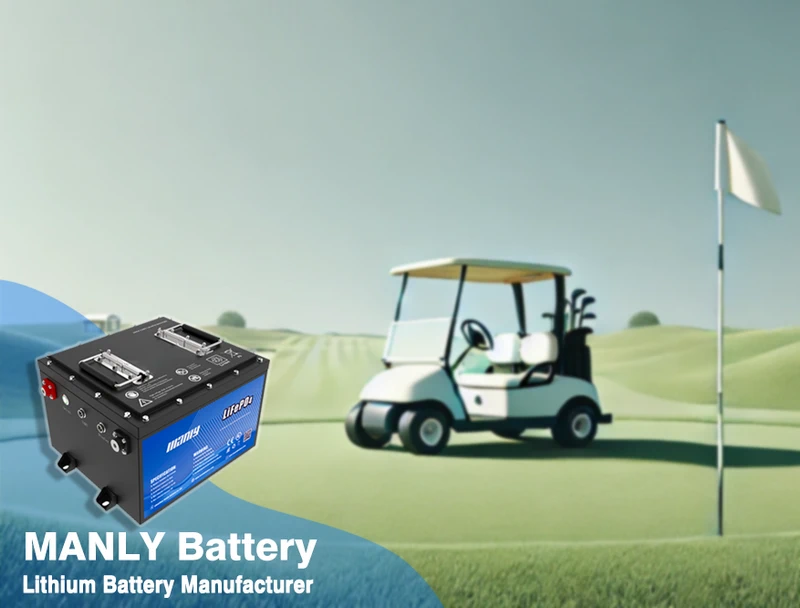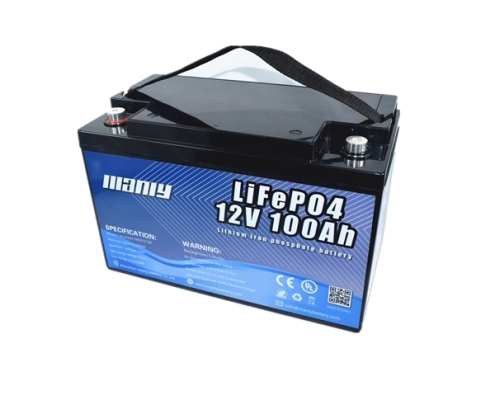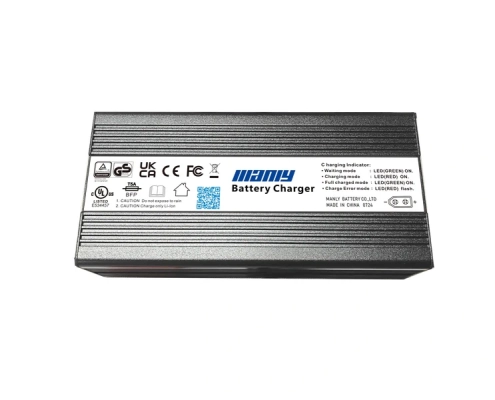How Long Do Deep Cycle Batteries Last
Tabla de contenido
Deep cycle batteries typically last between 3 to 15 years, depending on the type and how well they are maintained. For lead-acid batteries, the lifespan is generally between 3 to 5 years, with around 300 to 1,000 charge cycles, depending on the depth of discharge and usage. On the other hand, baterías de litio last significantly longer—up to 10 to 15 years and can handle 2,000 to 5,000 charge cycles. The differences in lifespan are largely due to the chemistry and design of the batteries, with lithium batteries offering higher efficiency, faster charging times, and fewer maintenance needs compared to their lead-acid counterparts. Understanding these variations helps you plan accordingly for replacement and maintenance, ensuring your devices continue to perform reliably.
What Affects the Lifespan of a Deep Cycle Battery?
The lifespan of a batería de ciclo profundo is influenced by a variety of factors, including how it’s used, maintained, and stored. Proper care can significantly extend its life, while poor usage and neglect can lead to a faster decline in performance. Here’s an overview of the most important factors:
1. Usage and Discharge Patterns
The way you use your deep cycle batteries plays a crucial role in their lifespan. One of the most significant factors is how deeply the battery is discharged during use. Deep cycle battery lifespan tends to decrease if the battery is frequently discharged to very low levels or left without a sufficient charge cycle.
- Shallow Discharges: Keeping the battery from being discharged fully can help extend its lifespan. Ideally, a deep cycle battery should be discharged to about 50% before recharging. This reduces stress on the battery and maintains its ability to hold charge over time.
- Complete Discharges: Conversely, fully discharging a battery frequently (also called deep cycling) can shorten its overall lifespan. While deep cycle batteries are designed for repeated discharges, regularly letting the charge drop too low leads to capacity loss over time.
2. Maintenance and Care
Regular maintenance is essential for getting the most out of a deep cycle battery, especially for certain types like flooded lead-acid batteries. Without proper upkeep, even the best batteries will degrade faster.
- Water Levels: For flooded lead-acid deep cycle batteries, maintaining proper electrolyte levels is critical. If the water level drops too low, the plates inside the battery can get damaged, which reduces capacity.
- Cleaning: Battery terminals should be cleaned regularly to prevent corrosion, which can interfere with performance. Corroded terminals can cause poor connections and prevent the battery from charging fully.
- Charging: Proper charging is one of the most important aspects of battery maintenance. It’s recommended to use a quality charger that follows a multi-stage charging process, which includes bulk charging (charging quickly up to about 80% capacity), absorption charging (slower charging to avoid overcharging), and float charging (keeping the battery at full charge without overcharging). This method optimizes the lifespan and health of the battery.
3. Environmental Factors
External conditions also play a big role in determining how long a deep cycle battery lasts.
- Temperatura: Both high and low temperatures can negatively affect a battery’s lifespan. Excessive heat can cause water loss and increase self-discharge, while cold temperatures can reduce capacity and make the battery less efficient. To maximize battery life, it should be stored and used in a cool, dry environment.
- Storage: If you don’t plan to use your deep cycle battery for an extended period, proper storage is essential. The battery should be fully charged and disconnected from any load to prevent it from discharging completely while in storage.
By paying attention to these key factors—usage patterns, maintenance, and environmental conditions—you can significantly improve the longevity of your deep cycle batteries and ensure they continue to perform at their best over time.
How Long Do Deep Cycle Batteries Typically Last?
The lifespan of deep cycle batteries can vary depending on the type of battery, usage patterns, and maintenance. On average, deep cycle battery lifespan ranges from 3 to 15 years. Proper care, including maintaining the appropriate charge cycles and ensuring optimal storage conditions, can significantly extend the lifespan of these batteries.
1. Lead-Acid vs. Lithium Deep Cycle Batteries
When comparing lead-acid and lithium batteries, it’s essential to understand their differences in terms of longevity, performance, and efficiency:
- Baterías de plomo ácido: Traditional lead-acid deep cycle batteries typically last between 3 to 5 years. These batteries are more affordable but require regular maintenance to maintain performance. Over time, the capacity of lead-acid batteries decreases due to frequent discharge cycles and the buildup of lead sulfate on the plates.
- Baterías de litio: Lithium batteries, especially those using LiFePO4 technology, offer a much longer lifespan of up to 15 years, with the ability to handle 2,000 to 5,000 charge cycles. Their longevity is one of the key reasons for their increasing popularity. They also have a higher depth of discharge (up to 80%) compared to lead-acid batteries, meaning you can use more of the battery’s capacity before needing to recharge.
In addition, lithium batteries charge faster, are more energy-efficient, and require significantly less maintenance compared to lead-acid batteries. While the initial cost of lithium batteries is higher, their longer lifespan and reduced maintenance needs make them a more cost-effective choice in the long run.
Here’s a comparison table for Lead-Acid vs. Lithium Deep Cycle Batteries:
| Feature | Lead-Acid Deep Cycle Batteries | Lithium Deep Cycle Batteries |
|---|---|---|
| Esperanza de vida | 3 to 5 years | 10 to 15 years |
| Charge Cycles | 300 to 1,000 cycles | 2,000 to 5,000 cycles |
| Depth of Discharge (DoD) | 50% | 80% |
| Eficiencia | Around 80% | 95% or higher |
| Velocidad de carga | Slow | Fast (4 times faster than lead-acid) |
| Mantenimiento | Requires regular maintenance | Minimal maintenance required |
| Energy Density | Lower | Higher |
| Weight | Heavier | Encendedor |
| Tamaño | Más grande | Compacto |
| Costo | Costo inicial más bajo | Mayor costo inicial |
| Tolerancia de temperatura | Funciona mal en temperaturas extremas | Mejor rendimiento en temperaturas extremas |
| Instalación | Requiere ventilación | Se puede instalar en cualquier posición (no se requiere ventilación) |
2. How to Extend the Lifespan of Your Deep Cycle Battery
Para maximizar la vida útil de su batería de ciclo profundo, las prácticas adecuadas de uso, mantenimiento y almacenamiento son esenciales. Aquí hay algunos consejos clave para extender la vida de su batería:
- Ciclos de carga completa: Evite la "carga de oportunidades", que implica cargar con frecuencia la batería en ráfagas cortas. En su lugar, asegúrese de que la batería pase por un ciclo de carga completo. Esto significa cargarlo completamente después de cada uso para evitar la acumulación de sulfato, lo que puede acortar la duración de la batería.
- Monitor de profundidad de descarga (DOD): La profundidad a la que descarga su batería juega un papel crucial en su longevidad. La mayoría de las baterías de ciclo profundo están diseñadas para manejar una profundidad de descarga de aproximadamente 50%, pero algunas, como las baterías de litio, pueden manejar hasta el 80%. Cuanto más superficial sea la descarga, más ciclos puede soportar su batería.
- Almacenamiento adecuado: Si necesita almacenar su batería de ciclo profundo, asegúrese de que esté completamente cargado y desconectado de cualquier carga. Para las baterías de litio, esto ayuda a prevenir una exceso de carga durante el almacenamiento a largo plazo. Almacene las baterías en un lugar fresco y seco y evite temperaturas extremas, ya que las temperaturas altas y bajas pueden afectar negativamente el rendimiento de la batería.
- Carga lenta: While it may be tempting to use fast chargers, slower charging is gentler on the battery and helps preserve its internal components. Charging overnight at a slow rate can protect your battery from overheating, which is common with rapid charging methods.
By following these maintenance practices, you can extend the useful life of your deep cycle battery, whether you use lead-acid or lithium batteries, and ensure optimal performance throughout its lifespan.
What Are the Signs That Your Deep Cycle Battery Needs Replacing?
Recognizing when your deep cycle battery is nearing the end of its lifespan is crucial for maintaining reliable performance. Key indicators include:
- Difficulty Starting Devices: If your equipment powered by the battery struggles to start or operates sluggishly, it may signal reduced capacity.
- Voltage Readings: A fully charged 12-volt deep cycle battery should read between 12.4 and 12.7 volts. Readings below this range suggest the battery isn’t holding a charge effectively.
- Physical Damage: Cracks, bulges, or leaks in the battery casing indicate internal damage, often due to overcharging or deep discharges.
- Corrosion on Terminals: Excessive corrosion can impede electrical flow, affecting performance. While minor corrosion can be cleaned, persistent buildup may indicate deeper issues.
- Reduced Runtime: A noticeable decrease in the duration your devices operate on a single charge points to diminished battery capacity.
Conclusión
In conclusion, deep cycle batteries play a vital role in ensuring consistent power for various applications, but their lifespan is not indefinite. By keeping an eye on key indicators such as voltage, performance, and efficiency, you can identify when your battery is no longer performing optimally. Whether you are using lithium batteries or traditional lead-acid options, timely maintenance and replacement can help you avoid potential disruptions. Understanding the signs of battery deterioration will not only help maintain the efficiency of your systems but also extend the longevity of your investment.
Preguntas más frecuentes
1. Can a deep cycle battery last 10 years?
Yes, a batería de ciclo profundo can last up to 10 years, particularly if it is a Batería de Litio. Lithium batteries have a longer lifespan, typically lasting 10 to 15 years with proper maintenance. However, baterías de plomo-ácido generally last between 3 to 5 years.
2. How do I know when my deep cycle battery needs replacing?
Signs that your batería de ciclo profundo needs replacing include difficulty starting devices, significantly reduced runtime, voltage readings below 12.4 volts, physical damage like cracks or leaks, and corrosion on the terminals. Regular monitoring of these indicators will help you determine when it’s time for a replacement.
3. What kills a deep cycle battery?
Several factors can shorten the lifespan of a batería de ciclo profundo, including over-discharging, overcharging, extreme temperatures, and lack of regular maintenance. Frequent deep discharges and improper charging methods are particularly damaging to both lead-acidybaterías de litio, leading to a faster decline in battery performance.







